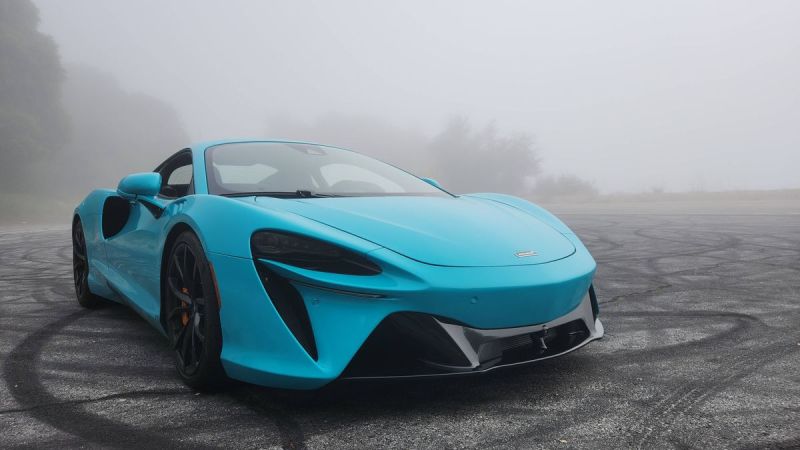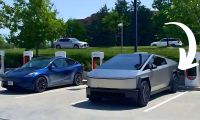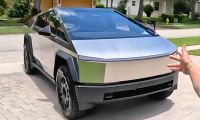“All in all, the Artura is a fantastic car, but it wasn’t exactly the revelatory ‘I need to have more of this in my life’ experience I thought it was going to be.” That single line, delivered with the kind of honesty you only get from a long drive and a long post on Reddit, perfectly encapsulates the enigma that is the McLaren Artura.
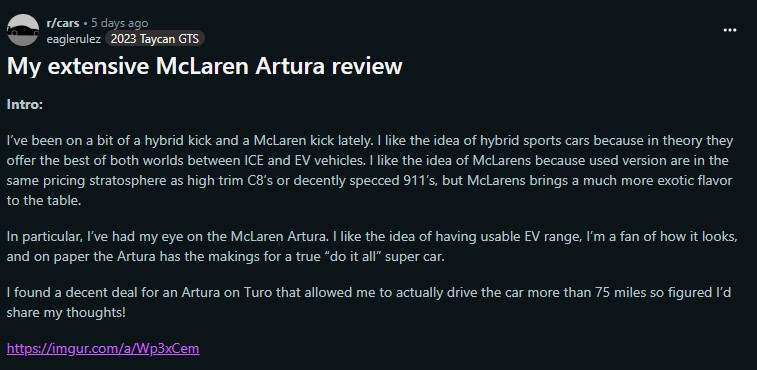
Redditor eaglerulez, an owner of a Porsche Taycan GTS and a seasoned test pilot of everything from C8 Z06s to Alfa 4Cs, lived with the Artura long enough to understand it and came away both impressed and slightly underwhelmed.
2025 McLaren Artura Hybrid Powertrain, Dimensions, Pricing & 0-60mph Performance
- The McLaren Artura is powered by a 3.0-liter twin-turbocharged V6 engine paired with an electric motor, delivering a combined output of 690 horsepower and 531 lb-ft of torque. This plug-in hybrid system includes a 7.4 kWh lithium-ion battery, enabling an electric-only range of up to 19 miles.
- The Artura measures approximately 178.7 inches in length, 75.3 inches in width, and 47.0 inches in height, with a wheelbase of 103.9 inches. Its curb weight is around 3,303 pounds, contributing to its agile handling characteristics.
- The starting price for the 2025 McLaren Artura is approximately $254,100, with higher trims and additional options increasing the cost.
- The Artura accelerates from 0 to 60 mph in 3.0 seconds and achieves a top speed of 205 mph, showcasing its supercar performance credentials.
The Artura should be a grand slam. A 671-horsepower twin-turbo V6 mated to an electric motor, carbon fiber everything, and a ride so supple it makes a Taycan’s air suspension feel agricultural.
On paper, it’s the ultimate “have your cake and eat it too” machine, an exotic that’s just as at home cruising in EV mode at 40 mph as it is demolishing triple digits on canyon roads.
“The Artura has incredibly comfortable damping… smoother than a Taycan’s air suspension,”
Eaglerulez writes. That’s no casual observation; that’s a seasoned driver acknowledging that McLaren may have built the most livable supercar this side of a GT3 Touring.
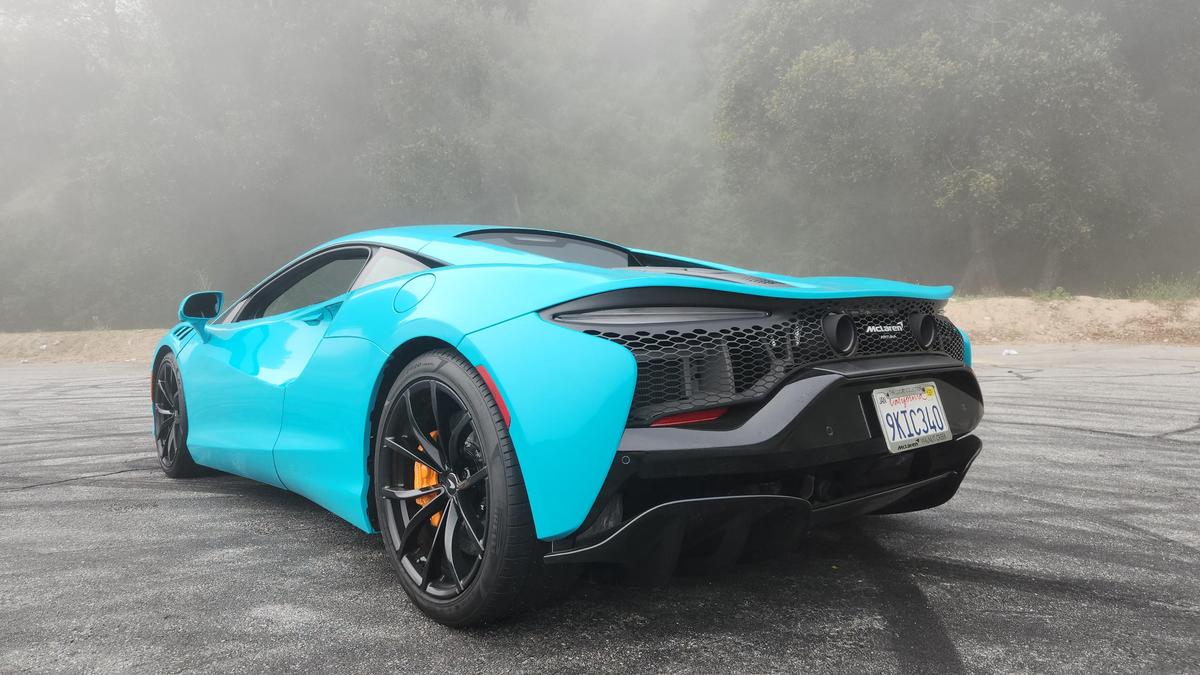
And yet, something’s missing. “Surprisingly mushy power delivery,” he says, noting the torque fill from the electric motor feels more like a polite suggestion than a shot of adrenaline. The Artura builds speed effortlessly, almost too effortlessly. Even mcbawk, a fellow Artura owner and Z06 enthusiast, agrees:
“You don’t feel like you are moving as fast as you should be, but you are. Feels like a bullet train.”
The problem is that bullet trains aren’t particularly fun to drive. The sensation of speed is muted, the drama dialed back. You’re going fast, you just don’t feel it. For a car that costs north of $300,000, that’s a philosophical problem.
McLaren Artura Chassis Dynamics: Unrivaled Handling & Driver Feedback
Still, when it comes to chassis tuning, McLaren remains untouchable when compared to other manufacturers. This is a car that steers and rotates like a Lotus with a billionaire’s R&D budget.
“The rear feels adhered to the pavement.”
Notes eaglerulez. And with hydraulic steering still present and accounted for, the Artura delivers road texture and front-end bite that no EPS rack can replicate.
It’s that level of feedback, the kind that starts in the tires and ends in your fingertips, that defines the McLaren experience. The engine might not howl like a Ferrari V12, but the car talks in every other way that matters.
Of course, it wouldn’t be a British exotic without a few quirks, and the Artura’s electronics are where ambition outpaces its execution. The tablet-style infotainment reboots randomly, the backup camera looks like it’s shot on VHS, and as mcbawk explains, the whole system runs on an innovative ethernet-based network meant to eliminate copper wiring… but at the cost of speed and usability.
“That’s the price you pay for extreme weight savings,”
Admirable, sure. But when your $20K Chevy Bolt has better tech, admiration only gets you so far.
Then there’s the hybrid system itself. It’s part of what makes the Artura revolutionary, and part of what holds it back. The electric motor gives you a short EV range (up to 18 miles, optimistically), but it can’t recharge quickly enough with just the engine.
McLaren Heritage: From Bruce McLaren’s Motorsport Legacy to Modern Supercars
- McLaren's journey began in motorsport, founded by Bruce McLaren in 1963. Decades of Formula 1 success built a reputation for innovation and performance, which laid the groundwork for road car development.
- In the 1990s, McLaren entered the road car world with the iconic McLaren F1. Though limited in production, it showcased the brand’s technical prowess and helped define its future design and engineering philosophy.
- The 2011 launch of the MP4-12C marked McLaren's serious move into mass-production supercars. Backed by in-house engineering and a new production facility, it established the brand’s capability to compete with Ferrari and Lamborghini.
- McLaren broadened its lineup with the Sports, Super, and Ultimate Series, offering models like the 570S, 720S, and P1. This tiered strategy enabled broader appeal and higher production volumes while maintaining exclusivity.
There's no regen braking, and the strategy for power deployment often feels arbitrary.
“Hybrids sound good on paper, but often disrupt the experience.”
Says mcbawk. It’s as if the Artura’s brilliance is always just one menu setting or drive mode away, but never quite in the default position.
All of this raises an uncomfortable question: Is it worth it? For $300K? Probably not. For $200K used? Maybe. As hi_im_bored13 puts it,
“It just needs to be good enough to get you close to that sensation.”
That’s the McLaren Artura in a nutshell. It's not the epiphany you might hope for when you first see the badge, the carbon fiber, the performance specs.
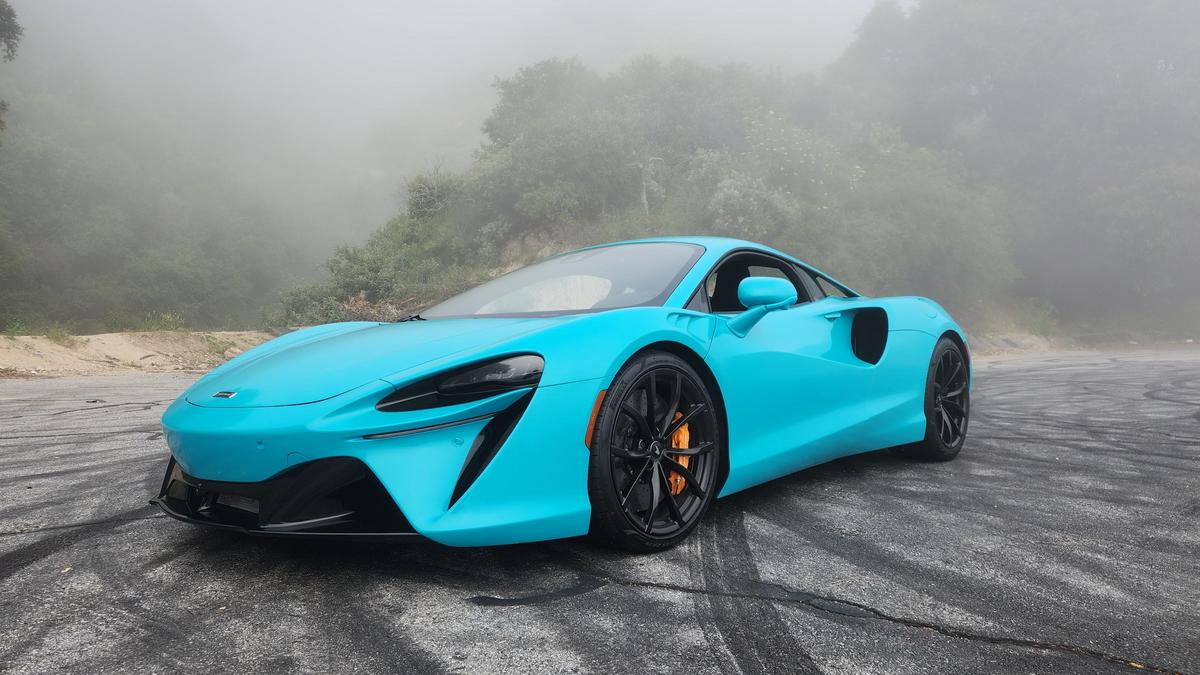
But it is a masterstroke of engineering wrapped in some beautifully flawed British eccentricity, and sometimes, that’s enough.
Why the McLaren Artura Resonates: Precision Engineering Over Flashy Drama
Because when it comes down to it, McLaren still builds cars for the faithful. For those who want the sensation of an F1 chassis reborn for the road. For those who prize feedback and composure over launch control theatrics. The Artura isn’t a fireworks show; it’s a scalpel. But even surgeons need a little drama now and then.
Have you driven the McLaren Artura? What do you think about the car?
Let us know in the comments below!
Noah Washington is an automotive journalist based in Atlanta, Georgia. He enjoys covering the latest news in the automotive industry and conducting reviews on the latest cars. He has been in the automotive industry since 15 years old and has been featured in prominent automotive news sites. You can reach him on X and LinkedIn for tips and to follow his automotive coverage.



